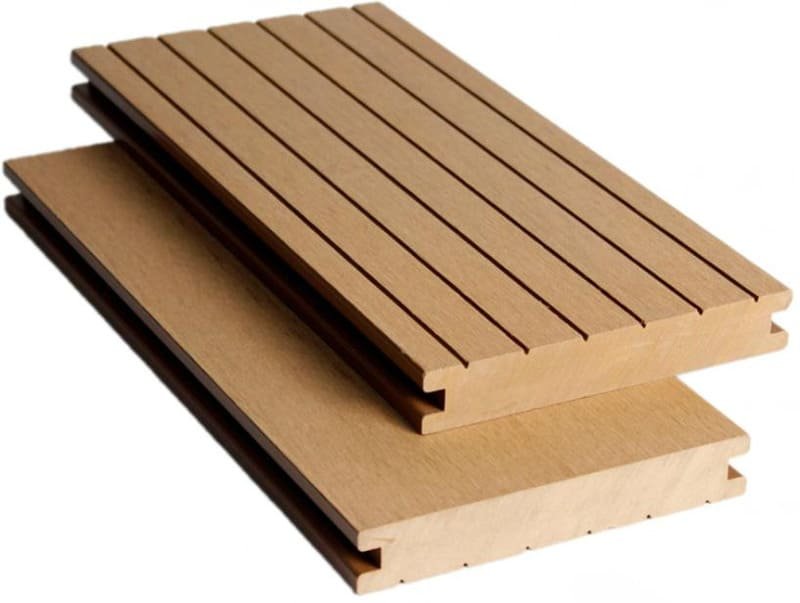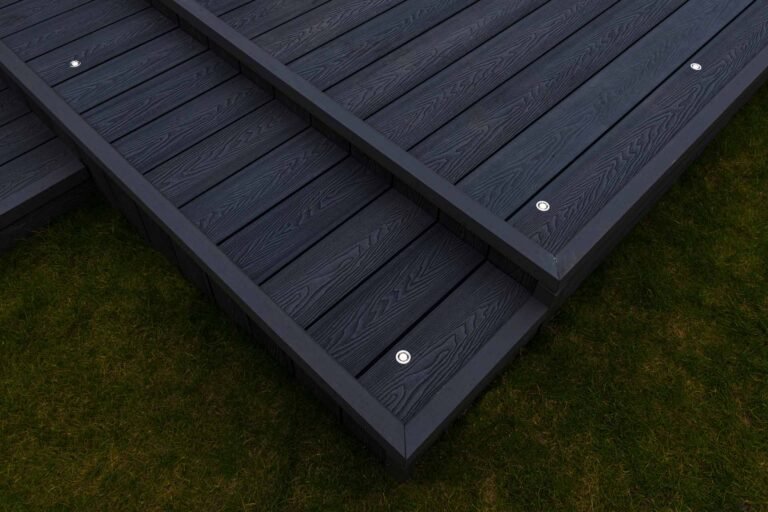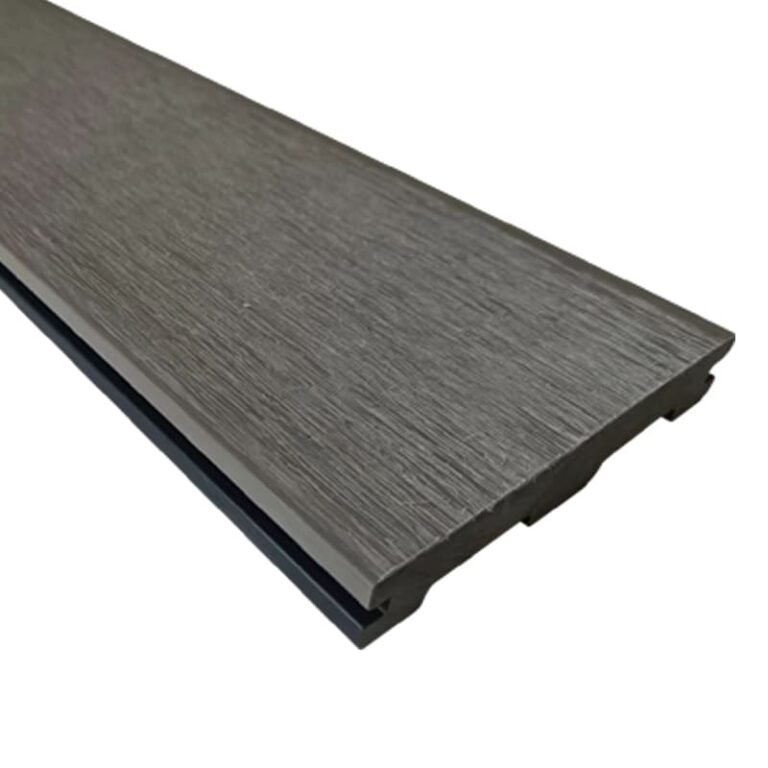Tired of decking that stains and fades? Worried about maintenance? Capped composite decking offers a solution, but understanding what it truly is can be confusing for business owners.
Capped composite decking is an advanced version of traditional composite. It has a core made of wood fibers and plastic[^1], but it is "capped" with a durable, protective polymer shell[^2]. This outer layer provides superior resistance to stains, fading, and moisture damage for long-lasting performance.
Over my 12 years in the WPC industry, I've seen materials evolve. Early composite decking was a game-changer, but it had its flaws. The introduction of capped technology was a massive leap forward, directly addressing the main concerns we heard from partners about long-term appearance and durability. It’s not just an upgrade; it’s a direct response to market needs for a more resilient and reliable product. This evolution is key to understanding which product is right for your customers and your business. Let's dig into the details so you can make an informed choice for your inventory.
How do I know if my composite decking is capped?
Unsure about your decking's type? It can be hard to tell them apart. This makes it difficult to know if your stock has the best protection against stains and fading.
You can identify capped composite decking by its protective outer layer. It typically has a smoother, slightly glossier finish and a more consistent color. If you look at a cross-section of the board, you will see a distinct shell surrounding the inner composite core.
When I visit a partner's warehouse or a project site, I often use a few simple methods to check the decking type. It’s about more than just a quick glance. I encourage you to get hands-on with the product. Capped decking just feels different. The manufacturing process, called co-extrusion[^3], bonds the cap to the core, creating a very durable board.
Visual and Touch Inspection
The easiest way to tell the difference is by looking and feeling. Capped boards have a very uniform surface. You won't see the tiny wood fibers that are often visible in non-capped versions. The surface feels less porous and more like a high-quality plastic. Run your hand over it; it should feel smooth and solid. For a definitive check, always look at a sample's cross-section. The cap will be a clear, separate layer, usually between 0.5mm to 1mm thick, wrapped around the core. This is the feature that gives the board its enhanced protection.
What is non-capped composite decking?
Considering traditional decking? It's affordable, but you might worry about long-term performance. Fading and staining are common concerns with older composite technologies, which can affect customer satisfaction.
Non-capped composite decking is the first-generation WPC product, often called traditional or classic composite. It is a simple blend of wood fibers and plastic throughout the entire board, with no extra protective layer. It provides good value but has lower resistance to staining and fading.
I remember when non-capped decking was the only composite option on the market. It was a fantastic alternative to wood because it solved the problem of rotting and splinters. We still supply a lot of it today because it's a reliable, budget-friendly choice[^4]. It’s important to understand that "first-generation" doesn't mean "bad." It simply means it has different characteristics. For many projects with a tight budget or where the ultimate stain resistance isn't the top priority, non-capped decking is an excellent and popular choice. It's the foundation of the WPC industry and still holds a strong place in the market.
The Original Composite Solution
Non-capped composite decking is a homogenous product. This means the mix of recycled plastic and wood fiber is the same from the core to the surface. Because the wood fibers are exposed on the surface, the material is more porous. This makes it more likely to absorb moisture and stains from things like wine, oil, or fallen leaves. It also tends to show fading more quickly over time from UV exposure. However, it remains a very durable and eco-friendly building material that delivers on the core promises of low-maintenance composite decking.
Is capped composite decking better?
Struggling to choose the right decking? You want the best performance, but the higher price of new options gives you pause. Making the wrong choice can affect your reputation.
"Better" depends on your business goals and customer needs. Capped composite decking offers superior performance in stain, fade, and mold resistance. If long-term appearance and minimal cleaning are top priorities, then it is the better choice, despite its higher initial cost.
From my experience working with distributors worldwide, the definition of "better" often comes down to budget and local market expectations. In some regions, price is the most important factor, and traditional decking is the perfect fit. In other markets, customers are willing to pay a premium for the advanced protection and aesthetics that capped decking provides. I always tell my partners to consider the total value. A capped deck might cost more upfront, but it can save the end-user money and effort on cleaning and maintenance over its lifespan. The best product for your business is the one your customers will be happy with for years to come.
Performance vs. Cost
The primary advantage of capped composite is its performance. The polymer shell acts like a shield. It keeps stains on the surface, so they can be easily wiped away. It contains advanced UV inhibitors[^5], so the color stays vibrant for much longer. It also prevents moisture from penetrating the core, which greatly reduces the risk of mold and mildew. These benefits make it an ideal choice for high-use areas, around pools, or in climates with harsh weather. While traditional composite is still a strong product, capped composite simply offers a higher level of protection, which justifies its premium price point.
What is the difference between non-capped and capped composite?
Deciding between capped and non-capped decking can be tough. The differences in performance and price can be significant, and choosing the right one for your inventory is crucial for success.
The main difference is the protective outer shell on capped composite decking. This "cap" gives it superior stain, fade, and mold resistance. Non-capped decking is a uniform blend of wood and plastic, making it more affordable but also more porous and susceptible to staining.
I always frame this choice in terms of value for my partners. It’s not about which one is good and which is bad; it’s about matching the right product to the right customer and budget. Think of it like a car. A standard model will get you where you need to go reliably. A premium model has extra features for comfort, performance, and looks, but it comes at a higher price. Both are good cars, but they serve different needs. The same is true for WPC decking. Your goal as a wholesaler is to offer options that cover different price points and performance levels.
A Head-to-Head Comparison
To help you decide what to stock, it's useful to see a direct comparison. I’ve found that breaking it down into key performance areas makes the decision much clearer for my business partners.
| Feature | Capped Composite Decking | Non-Capped (Traditional) Composite Decking |
|---|---|---|
| Structure | Core of WPC + Protective Polymer Shell | Homogenous Mix of Wood and Plastic |
| Stain Resistance | Excellent; stains wipe off the surface | Fair; porous surface can absorb spills |
| Fade Resistance | Excellent; contains advanced UV inhibitors | Good; will fade more noticeably over time |
| Mold Resistance | Excellent; shell blocks moisture | Good; porous surface can harbor mildew |
| Cost | Higher (Premium) | Lower (Value-Oriented) |
| Best For | High-traffic areas, poolside, premium projects | Budget-conscious projects, low-spill areas |
This table shows that the choice depends on the application. For a restaurant patio where spills are common, capped decking is the clear winner. For a simple backyard deck on a tight budget, traditional composite is a fantastic option.
Conclusion
Both capped and non-capped decking are great materials. Capped offers maximum protection and longevity, while non-capped provides excellent value. The best choice depends on budget and performance needs.
[^1]: See how the blend of wood fibers and plastic creates a durable, eco-friendly alternative to traditional wood decking.
[^2]: Discover how the polymer shell enhances durability, stain, and fade resistance, making decking last longer with less maintenance.
[^3]: Understand the co-extrusion process and why it results in a stronger, more resilient decking product for demanding environments.
[^4]: See if traditional composite decking meets your needs for affordability without sacrificing too much on performance.
[^5]: Learn how UV inhibitors protect decking from sun damage, preserving color and structural integrity over time.









